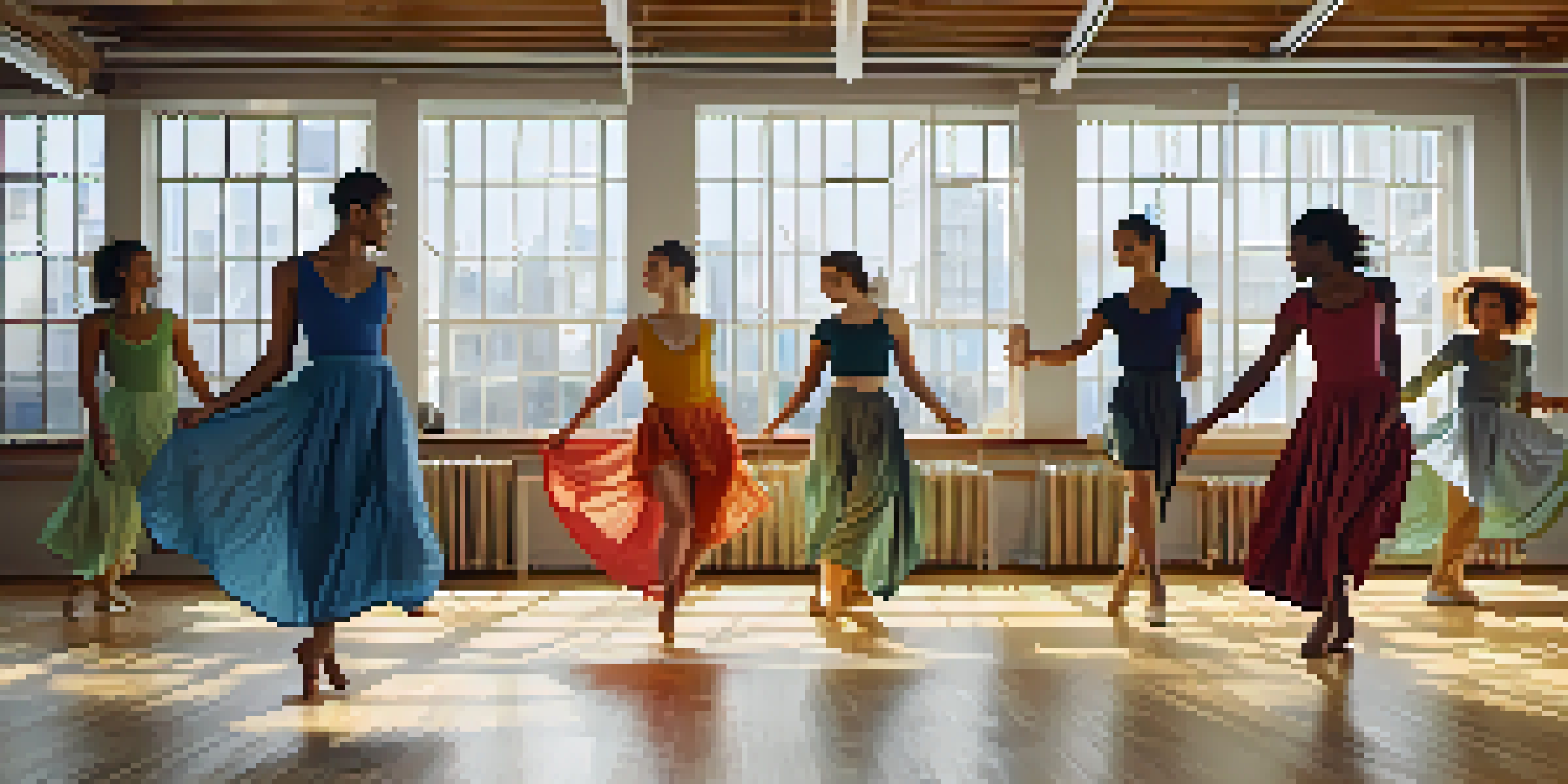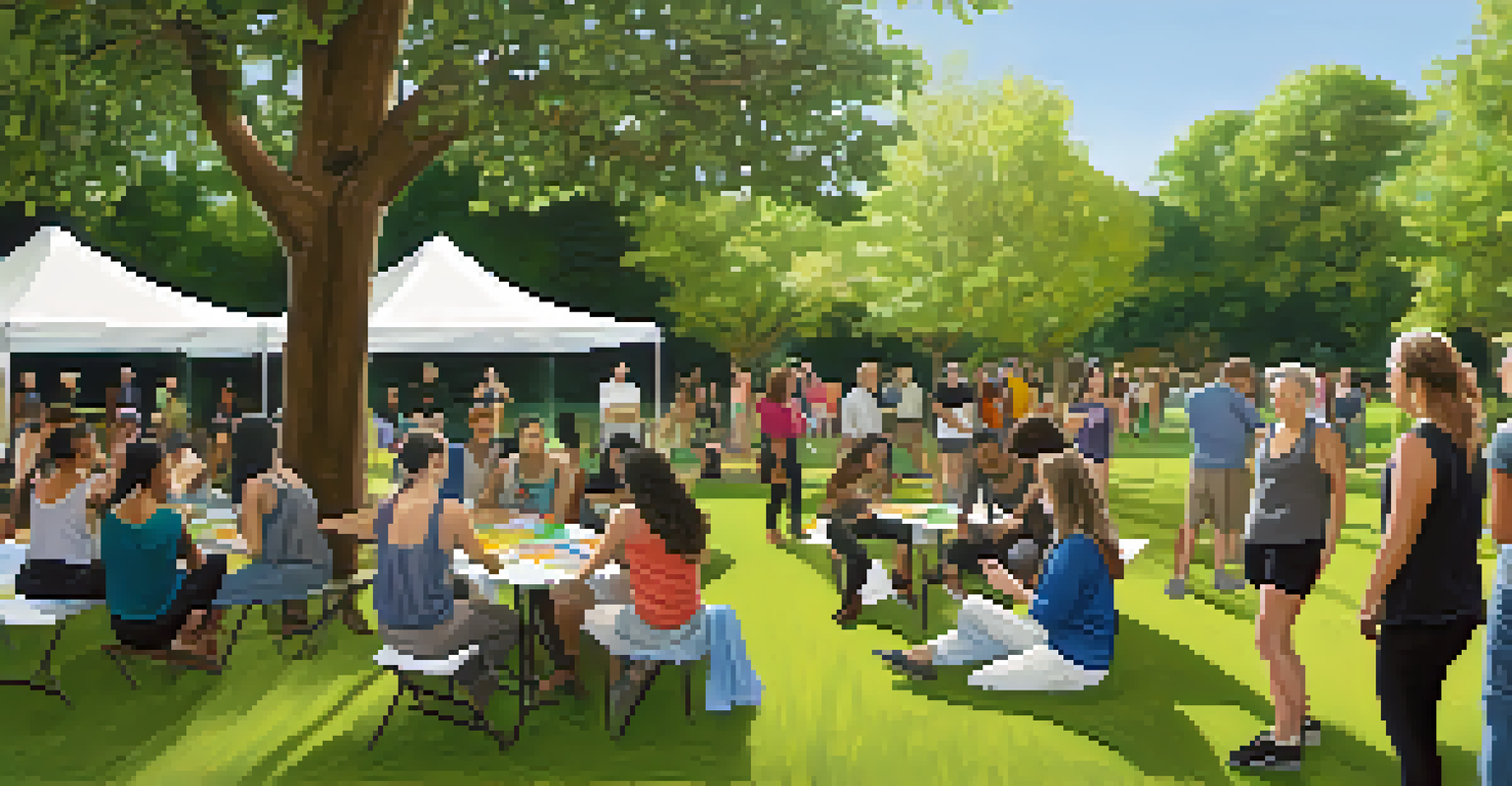Sustainable Dance: Eco-Friendly Practices in Dance Productions

Understanding Sustainable Dance and Its Importance
Sustainable dance refers to the integration of eco-friendly practices in dance productions. This movement is gaining momentum as artists and audiences alike become more aware of environmental issues. By adopting sustainable practices, the dance community can significantly reduce its carbon footprint and promote a healthier planet.
We do not inherit the earth from our ancestors; we borrow it from our children.
The importance of sustainable dance lies not just in protecting the environment, but also in raising awareness. Dancers and choreographers can use their platforms to inspire change and encourage others to consider their ecological impact. When audiences see a performance that emphasizes sustainability, it can spark conversations about broader environmental issues.
Moreover, embracing sustainability can enhance the creativity of dance productions. Artists are challenged to think outside the box, finding innovative solutions to common challenges. This not only enriches the art form but also sets a precedent for future generations of dancers.
Eco-Friendly Set Design: A Creative Approach
When it comes to set design in dance productions, eco-friendly options are becoming increasingly popular. Designers are now exploring materials that are sustainable, such as reclaimed wood or recycled metals. These choices not only help the environment but also add a unique touch to the aesthetic of the performance.

Using local materials can also minimize transportation emissions, further reducing the production's carbon footprint. For instance, collaborating with local artisans for set pieces not only supports the community but also showcases regional craftsmanship. This approach fosters a deeper connection between the dance and its setting.
Embracing Eco-Friendly Practices
Sustainable dance integrates eco-friendly practices to reduce carbon footprints and raise environmental awareness.
Additionally, innovative designs can utilize temporary or modular structures, allowing for reuse in future productions. This not only cuts down on waste but also encourages a culture of circularity within the arts. Ultimately, eco-friendly set design is about creating beauty while respecting our planet.
Sustainable Costumes: Fashion That Cares
Costumes play a vital role in dance, but they can also contribute significantly to waste. Sustainable costume design focuses on using organic fabrics and recycled materials, helping to lessen environmental impact. For example, designers might opt for fabrics made from bamboo or hemp, which require fewer chemicals and resources to produce.
Sustainability is no longer about doing less harm. It's about doing more good.
Another innovative approach is the concept of costume rental or sharing. By creating a network where productions can borrow or swap costumes, the dance community can reduce the need for new garments. This not only saves money but also fosters collaboration among artists.
Furthermore, upcycling old costumes into new designs is a creative way to breathe new life into materials. This process allows for unique, one-of-a-kind pieces that tell a story while minimizing waste. Sustainable costumes not only look good but also promote a message of environmental responsibility.
Green Lighting and Sound: Energy-Efficient Choices
Lighting and sound are crucial elements in any dance production, but they can also consume significant energy. The shift towards LED lighting is a game-changer in this realm, as LEDs are far more energy-efficient than traditional bulbs. This simple change can drastically reduce energy consumption and subsequently lower production costs.
In addition to lighting, sound systems can also adopt greener practices. Using energy-efficient equipment and optimizing sound systems for lower power usage can make a substantial difference. Moreover, considering the acoustics of the venue can reduce the need for extensive sound reinforcement, lowering both energy use and costs.
Innovative Set and Costume Design
Using sustainable materials and creative designs in set and costumes enhances production aesthetics while promoting environmental responsibility.
Lastly, utilizing renewable energy sources, such as solar or wind, for powering productions can further enhance sustainability. By aligning the technical aspects of dance with eco-friendly practices, productions can create an inspiring atmosphere while caring for the planet.
Eco-Conscious Rehearsals: A Step Towards Sustainability
Rehearsals are an essential part of dance productions, and they offer a perfect opportunity to implement sustainable practices. By encouraging carpooling or using public transport for cast and crew, productions can significantly reduce their carbon emissions. This simple act not only fosters teamwork but also sets a positive example.
Incorporating eco-friendly materials in rehearsal spaces, such as recycled flooring or non-toxic cleaning supplies, can also promote sustainability. By creating an environmentally friendly workspace, dancers are reminded of their commitment to the planet every time they step onto the studio floor. This can inspire them to think sustainably in other areas of their lives.
Additionally, considering the use of digital tools for scheduling and communication can help cut down on paper waste. By embracing technology, the dance community can streamline processes and reduce their environmental impact, all while enhancing productivity.
Community Engagement: Inspiring Sustainable Practices
Engaging the community in sustainable dance practices can amplify the movement's impact. Hosting workshops or outreach programs that educate participants on eco-friendly practices can create a ripple effect. This not only spreads awareness but also involves audiences in the conversation around sustainability.
Collaborating with local environmental organizations can also enhance community engagement. By partnering on events or initiatives, dance productions can create a platform for dialogue about environmental issues. This collaboration can foster a sense of shared responsibility and encourage individuals to take action.
Community Engagement for Impact
Engaging the community through workshops and collaborations amplifies the sustainability movement in the dance world.
Moreover, showcasing sustainable practices during performances can inspire audiences to adopt similar practices in their own lives. When people see the commitment to sustainability on stage, it can motivate them to consider their own environmental impact. Community engagement is a powerful way to build momentum for a more sustainable future.
Measuring Impact: Tracking Sustainability in Dance
To truly embrace sustainability, dance productions must evaluate their impact. This can involve tracking energy consumption, waste production, and other key metrics over time. By measuring these factors, productions can identify areas for improvement and set tangible goals for future performances.
Implementing a feedback loop that includes input from dancers, crew, and audiences can also provide valuable insights. Gathering perspectives on sustainability initiatives allows for continuous improvement and fosters a culture of accountability. This collaborative approach can lead to more effective sustainable practices in the long run.

Moreover, sharing successes and challenges with the wider dance community can inspire others to adopt similar practices. By documenting their journey towards sustainability, productions can contribute to a larger movement within the arts. Measuring impact not only demonstrates commitment but also drives progress in sustainable dance.